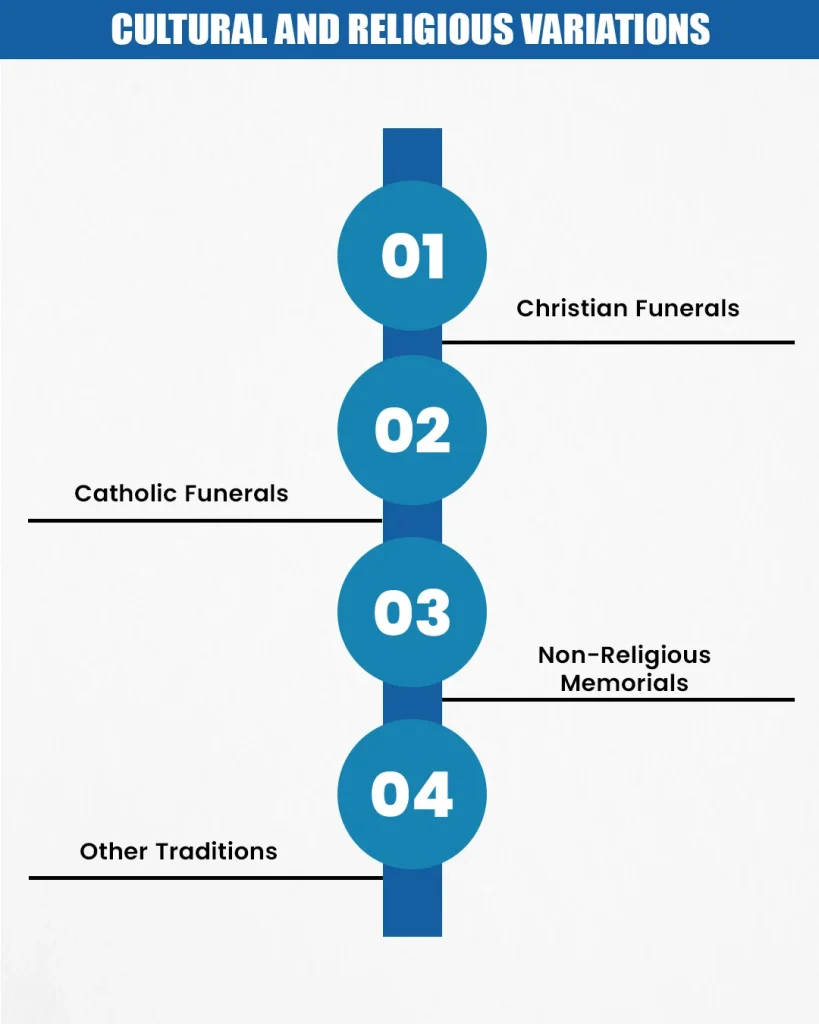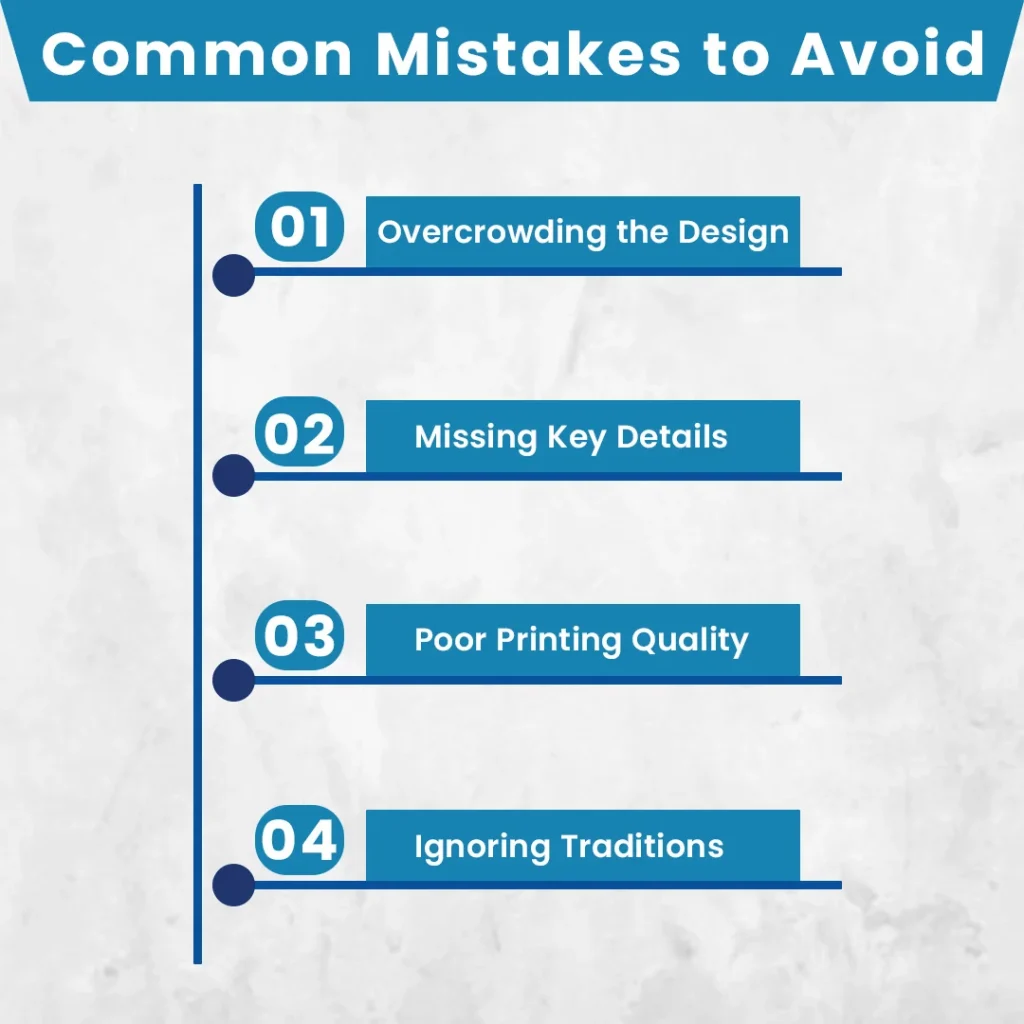Last Updated on: August 29th, 2025
Reviewed by Kyle Wilson
Planning a funeral is never an easy task. Along with the emotional weight of losing a loved one, families also face the responsibility of organizing a service that honors the life of the deceased.
One of the most meaningful ways to achieve this is through a funeral service program.
This printed booklet, often handed to guests at the ceremony, serves as both a practical guide and a heartfelt tribute. It tells attendees what to expect during the service, while also celebrating the life, values, and memories of the person being remembered.
Get Free Quotes
Customized Options Await
A funeral service program—sometimes called a memorial program, order of service, or funeral booklet—is a printed handout distributed at funerals, memorials, or celebrations of life. Its main purpose is twofold: it guides guests through the ceremony while also acting as a keepsake for family and friends.
Unlike an obituary, which is usually brief and published in newspapers or online, the program offers a more detailed and personal view. It may include the full order of service, biographical highlights, tributes, prayers, and acknowledgments. For many families, these booklets become treasured reminders long after the service is over.
A well-structured funeral service program provides clarity during a difficult time. Guests can follow along without confusion, ensuring the ceremony flows smoothly. At the same time, the program reflects the personality and legacy of the deceased, creating a lasting impression of their life and values.
Although there is flexibility in design, most funeral service programs follow a traditional structure that feels familiar and comforting to attendees.
The cover is usually the most visually striking element. It often features:
The choice of imagery and words should reflect the individual’s character, whether that means a classic portrait, a favorite nature scene, or even artwork they cherished.
The inside of the program typically contains the order of service, which lists the sequence of events from the opening prayer to the closing remarks. Alongside this, families may include an obituary, personal tributes, selected readings, or song lyrics.
The back cover often concludes with acknowledgments, expressions of gratitude, and information about a reception or gathering. Families may also include a favorite quote, a short prayer, or a closing image such as a dove, candle, or floral design.
To better understand the structure, let’s walk through an example of a traditional funeral service program.
The service may begin with a processional, where family and clergy enter as music plays. An opening prayer or scripture reading follows, setting the tone. Next, hymns or songs may be sung, interspersed with readings from religious texts or poems that reflect the deceased’s values.
The heart of the service usually includes one or more eulogies, delivered by close family members or friends. Afterward, a sermon or message of comfort is offered by the officiant. More music, moments of silence, or special rituals may follow before the ceremony concludes with a benediction and recessional.
This progression ensures that the service balances structure with personalization, creating space for both solemn reflection and celebration of life.
Not all services follow the same pattern. Different faiths and traditions shape the funeral program order of service in unique ways.
By recognizing these variations, families can create a program that respects both cultural heritage and individual preferences.

Writing a funeral service program may feel overwhelming, but breaking it into steps can make the process manageable. Start by gathering key details: the full name of the deceased, important dates, and a high-quality photo for the cover. Next, confirm the order of service with the officiant or religious leader to ensure accuracy.
Once the structure is set, add personal elements such as an obituary, tributes from family members, or meaningful poems and quotes. Keep the tone respectful and heartfelt, striking a balance between formality and warmth.
The obituary section offers a chance to share highlights of the person’s life. This might include their early years, education, career achievements, passions, and family relationships. Rather than listing facts only, it should capture the spirit of who they were.
Tributes can be written by children, grandchildren, or close friends. Including their voices adds intimacy and makes the program deeply personal.
Music is often central to a service. The program should list song titles, composers, and performers to avoid confusion. The same applies to readings, whether scripture passages, poems, or literary excerpts. Providing this information ensures everyone can follow along or participate.
Families do not need advanced design skills to create a beautiful program. Several funeral service program template free options are available.
For those who prefer ready-made structures, downloadable sample funeral program order of service PDFs can be printed directly after adding personal details.
While many families print programs at home, professional funeral program printing services can provide higher-quality results. Thicker paper, glossy finishes, and sharp images create a polished keepsake that will last for years.
Funeral homes often include program design and printing as part of their services. Alternatively, local or online printers can produce custom booklets with fast turnaround times.
When creating a funeral service program, certain pitfalls can detract from its impact.
By keeping these points in mind, families can ensure their program is both professional and meaningful.

A funeral service program may seem like a small detail in the midst of grief, but it carries profound significance. More than just a schedule of events, it is a carefully crafted guide that helps mourners navigate the ceremony while also preserving the memory of the person they loved.
Whether families choose a simple free template, design their own booklet, or work with professional printing services, the goal remains the same: to honor a life well lived. A thoughtful funeral service program brings comfort, clarity, and dignity to the service, ensuring it becomes a meaningful and lasting tribute.
Begin with the cover (photo, name, dates), add the order of service, include an obituary or tributes, and finish with acknowledgments and reception details.
A typical order includes processional, opening prayer, readings, music, eulogy, sermon or message, closing prayer, and recessional. Variations depend on cultural or religious traditions.
It is a printed booklet—also called an order of service or memorial program—that guides attendees through the ceremony and honors the deceased.
Common terms include funeral service program, memorial program, funeral order of service, or celebration of life booklet.
Senior Writer & Licensed Life Insurance Agent
Iqra is a dynamic and insightful senior writer with a passion for life insurance and financial planning. With over 8 years of hands-on experience in the insurance industry, Iqra has earned a reputation for delivering clear, actionable advice that empowers individuals to make informed decisions about their financial future. At Burial Senior Insurance, she not only excels as a licensed insurance agent but also as a trusted guide who has successfully advised over +1500 clients, helping them navigate the often complex world of life insurance and annuities. Her articles have been featured in top-tier financial publications, making her a respected voice in the industry.

Burial Senior Insurance provides information and services related to burial insurance for senior citizens, including policy options and end-of-life support services.
Copyright © Burial Senior Insurance 2025. All Right Reserved.